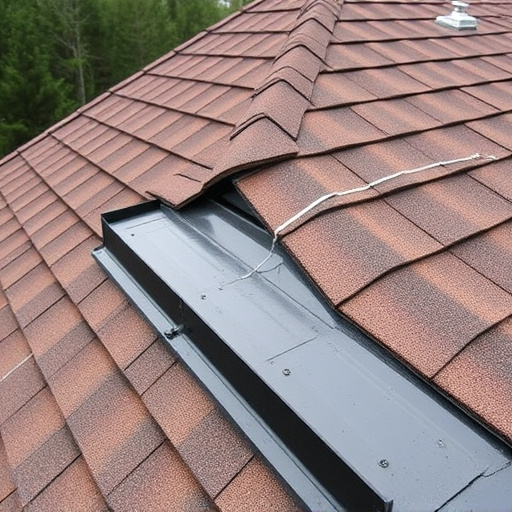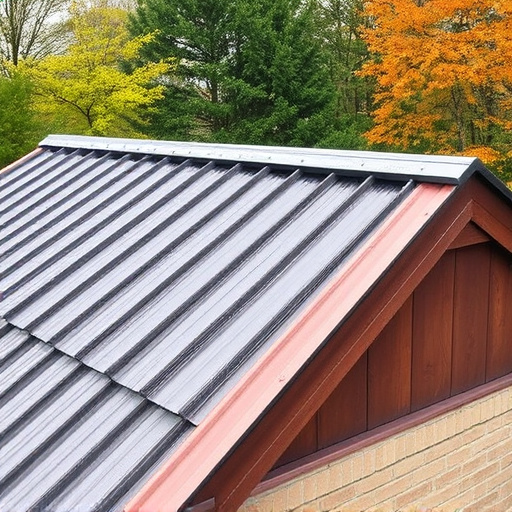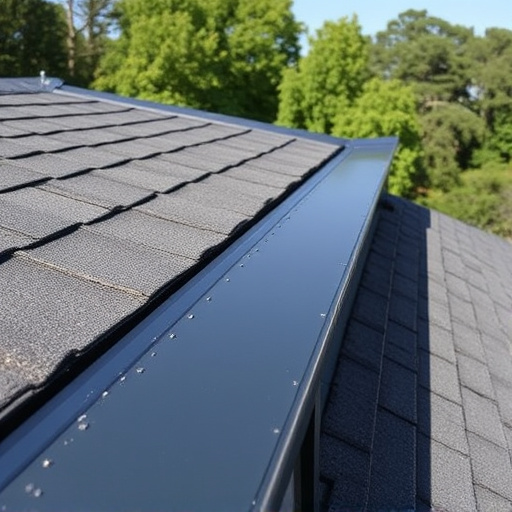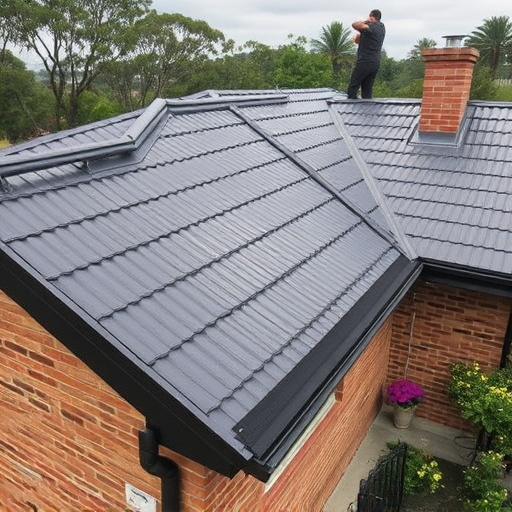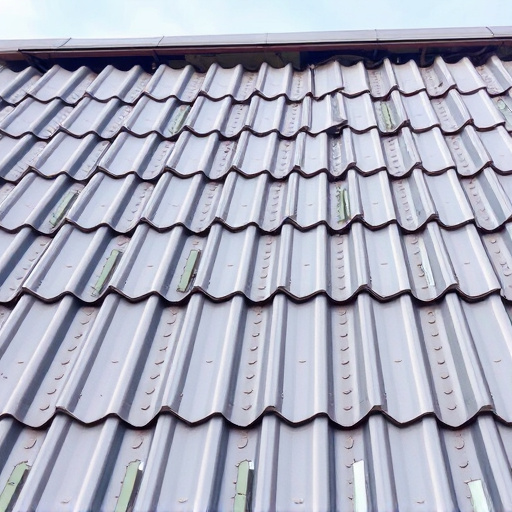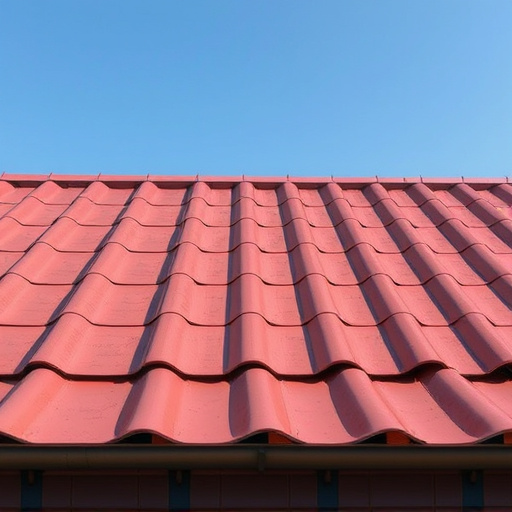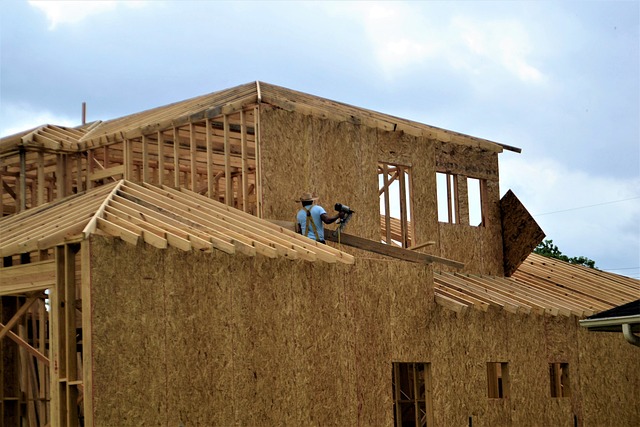Roofing and Flashing Bendigo: A Comprehensive Overview
Introduction
Welcome to an in-depth exploration of a vital aspect of urban development and infrastructure: Roofing and Flashing Bendigo. This article aims to dissect and demystify this critical component of building construction, its historical evolution, and its significant global impact. With a focus on both practical applications and emerging trends, we will guide you through the intricacies of this field, empowering you with knowledge about its role in shaping our built environment.
Understanding Roofing and Flashing Bendigo
Definition and Core Components
Roofing and flashing are essential construction processes involved in installing and maintaining protective systems on buildings’ exterior surfaces. The primary objectives are to safeguard the structure from weather elements, ensure structural integrity, and prolong the lifespan of the building envelope.
Key Elements:
- Roofing: This entails covering a building’s roof structure with suitable materials like tiles, shingles, metal sheets, or membranes. Effective roofing protects against leaks, moisture intrusion, and extreme weather conditions.
- Flashing: Flashing is the process of installing thin layers of impervious material in specific areas to seal joints, penetrations, and corners, preventing water penetration and ensuring a continuous barrier. Common flashing materials include metal, rubber, or synthetic membranes.
Historical Context
The practice of roofing has deep historical roots, dating back thousands of years. Ancient civilizations employed natural materials like thatch, wood, and animal hides to cover their dwellings. Flashing, as a specialized technique, emerged with the development of more sophisticated building methods, particularly in regions with varying climates. Over time, advancements in materials science and construction technologies have revolutionized roofing and flashing practices, making them more efficient, durable, and environmentally friendly.
Significance and Broader Landscape
Roofing and flashing are critical components of any building project, playing a pivotal role in:
- Weather Protection: Safeguarding buildings from rain, snow, wind, and UV radiation.
- Structural Stability: Maintaining the integrity of the building envelope, preventing water damage, and ensuring the longevity of construction materials.
- Energy Efficiency: Proper roofing can significantly impact a building’s thermal performance, contributing to energy conservation.
- Aesthetic Appeal: With various styling options, roofing enhances a building’s exterior beauty and architectural character.
Global Impact and Trends
International Influence
The concept of roofing and flashing has spread worldwide, adapting to diverse climates and cultural aesthetics. Each region has developed unique practices, influenced by local materials availability, architectural styles, and environmental considerations:
- North America: Known for its wide range of roofing materials, from asphalt shingles to metal panels. Flashing technologies have advanced to meet the demands of extreme weather events.
- Europe: Emphasizes energy-efficient roofing solutions, with a focus on insulation and sustainable materials. Traditional styles like slate roofs are still popular in certain regions.
- Asia Pacific: Rapid urbanization has led to increased demand for affordable yet durable roofing systems. Flashing techniques have evolved to accommodate complex building designs.
- Middle East: Overcoming extreme heat and desert conditions, specialized reflective roofing and advanced flashing systems are gaining traction.
Key Global Trends
- Sustainability: There is a growing trend towards eco-friendly materials and practices, with recycled content and energy-efficient roofing solutions gaining popularity.
- Smart Homes and Technology Integration: Integrating roofing and flashing with smart home technology for monitoring, maintenance, and improved performance.
- Complex Building Designs: Advancements in construction allow for more intricate building shapes, requiring specialized flashing techniques to ensure water-tightness.
- Rapid Urbanization: Rapidly developing cities drive demand for efficient, affordable, and quick-installation roofing systems.
Economic Considerations
Market Dynamics
The roofing and flashing industry is a significant contributor to global construction markets:
| Region |
Market Size (Estimated 2023) |
Growth Rate (2023-2028) |
| North America |
$45.6 billion |
4.2% |
| Europe |
$38.7 billion |
3.8% |
| Asia Pacific |
$62.1 billion |
5.5% |
| Middle East & Africa |
$15.9 billion |
4.7% |
| Global Total |
~$162.3 billion |
4.0% |
Investment Patterns
- Residential Sector: Single-family homes and multi-dwelling units drive roofing market demand, with a growing focus on energy efficiency and aesthetic appeal.
- Commercial and Industrial: Larger-scale projects, including office buildings, warehouses, and factories, require specialized flashing and roofing solutions for extended lifespans and high-performance expectations.
- Infrastructure Development: Public works projects like bridges, tunnels, and transportation hubs present unique challenges, requiring robust and durable roofing systems.
Economic Impact and Growth Drivers
- Job Creation: The industry supports a substantial workforce globally, contributing to local economies and skill development.
- Innovation and Research: Advancements in materials science lead to improved product performance, reduced installation times, and lower maintenance costs.
- Government Incentives: Many countries offer tax benefits and incentives for energy-efficient roofing, promoting sustainable practices.
Technological Advancements
Innovations in Roofing Materials
- Smart Roofs: Integrating sensors, solar panels, and advanced materials to create dynamic roofs that adapt to environmental conditions.
- Self-Healing Materials: Utilizing repair-capable membranes that can fill small cracks, extending roof lifespans and reducing maintenance costs.
- 3D Printing: This technology offers rapid prototyping and the potential for on-site printing of custom roofing components, revolutionizing construction processes.
Flashing Technology Improvements
- Self-Adhering Flashing: Easy-to-install membranes that eliminate the need for costly adhesive applications, reducing installation time and waste.
- Advanced Sealants: High-performance sealants with superior water resistance and flexibility, ensuring long-lasting seals in complex joints.
- Digital Design and Modeling: Computer-aided design (CAD) software enables precise flashing design, allowing for efficient material usage and improved installation accuracy.
Future Potential
- Enhanced Durability: Continuous research aims to create materials that can withstand extreme weather conditions, including high winds, heavy snowfall, and prolonged UV exposure.
- Integrated Building Systems: The integration of roofing with other building systems, like insulation, solar panels, and HVAC, for improved energy efficiency and system coordination.
- Digital Transformation: IoT (Internet of Things) devices and connected buildings will enable real-time monitoring of roof conditions, predictive maintenance, and enhanced safety measures.
Policy and Regulation
Key Policies and Frameworks
The regulatory landscape governing roofing and flashing varies across regions but generally includes:
- Building Codes: Local authorities enforce building codes that dictate minimum standards for roofing materials, installation practices, and flashing techniques to ensure structural safety and integrity.
- Environmental Regulations: Many countries have guidelines or laws promoting the use of environmentally friendly materials and practices, especially in areas prone to water scarcity or extreme weather events.
- Safety Standards: Occupational health and safety regulations cover worker protection during roofing installations, ensuring safe working conditions and proper training.
Influence on Industry Development
- Standardization: Regulatory bodies play a crucial role in establishing standards for roofing materials and flashing techniques, ensuring product quality and performance.
- Innovation Incentives: Some governments offer incentives or tax breaks for adopting innovative technologies and sustainable practices, fostering industry growth and environmental responsibility.
- Licensing and Certification: Licensing requirements for roofers ensure that only qualified professionals install roofs, maintaining safety standards and consumer protection.
Challenges and Criticisms
Overcoming Issues
Despite its critical role, the roofing and flashing industry faces several challenges:
- Weather-Related Damage: Extreme weather events can lead to significant roof damage, particularly in regions with harsh climates. Proper maintenance and resilient materials are essential.
- Labor Shortages: Skilled labor shortages impact construction industries globally, affecting roofing installations and repairs. Training programs and incentives can help mitigate this issue.
- Sustainability Concerns: Traditional roofing materials contribute to environmental issues, prompting a need for eco-friendly alternatives and recycling initiatives.
- Complex Building Designs: Flashing in modern architecture with intricate designs presents technical challenges, requiring advanced skills and specialized materials.
Proposed Solutions
- Resilient Material Development: Continuously researching and developing durable, weather-resistant materials to minimize damage from extreme conditions.
- Digital Training Programs: Implementing virtual reality training for roofers, enabling them to acquire complex installation skills in a safe, controlled environment.
- Sustainable Initiatives: Encouraging the use of recycled materials, promoting product recycling programs, and adopting eco-friendly practices throughout the industry.
- Specialized Labor Incentives: Offering incentives for skilled laborers to work in specialized flashing and roofing roles, addressing labor shortages.
Case Studies: Successful Applications
1. Eco-Friendly Roof Restoration in Urban London
Project Overview: A historic building in central London underwent a comprehensive roof restoration, focusing on sustainability and energy efficiency.
Solution: The project utilized self-healing membranes for flashing, along with recycled content roofing shingles. Solar panels were integrated into the design, providing renewable energy generation and reducing the building’s carbon footprint.
Outcomes: The restored roof not only enhanced the building’s aesthetic appeal but also reduced energy costs by 30% and significantly lowered the property’s environmental impact. This case demonstrates the successful integration of modern technologies in heritage buildings.
2. High-Rise Commercial Building in Dubai
Challenge: Constructing a high-rise commercial tower in Dubai’s harsh desert environment, where extreme heat and strong winds pose significant challenges.
Solution: Engineers specified advanced metal roofing panels with built-in cooling capabilities and self-adhering flashing membranes for speed and durability.
Results: The building achieved remarkable performance, withstanding high winds and intense UV radiation while maintaining optimal interior temperatures. This project highlights the industry’s ability to overcome extreme environmental challenges through innovative design and technology.
3. Sustainable School Campus in Australia
Initiative: A school district in Australia embarked on a green infrastructure project to create a sustainable campus, focusing on water-efficient roofing systems.
Implementation: The district installed green roofs on several buildings, utilizing lightweight growing media and native vegetation. These roofs provided insulation, reduced stormwater runoff, and created outdoor learning spaces.
Impact: The school achieved significant water savings, improved air quality, and enhanced the overall student experience. This case study illustrates how roofing can contribute to broader sustainability goals in educational institutions.
Future Prospects
Emerging Trends
- Smart Cities and Digital Integration: Roofing will play a pivotal role in smart city initiatives, with connected buildings and IoT devices enabling remote monitoring and predictive maintenance.
- 3D Printing and Modular Construction: On-site 3D printing of roofing components could revolutionize construction speed and efficiency, reducing waste and labor costs.
- Climate-Resilient Roofs: As extreme weather events increase, there will be a growing demand for roofs designed to withstand these challenges, requiring advanced materials and engineering solutions.
Growth Areas
- Green and Sustainable Roofing: The push for environmentally friendly practices will drive the adoption of green roofs, cool roofs, and renewable energy integration in roofing systems.
- Residential Market Expansion: With increasing urban populations, the residential roofing market is expected to grow significantly, presenting opportunities for innovative products and services.
- International Collaboration: Global partnerships can foster knowledge exchange, technology transfer, and best practices, shaping future industry trends.
Conclusion: Shaping the Future of Roofing and Flashing
Roofing and flashing Bendigo is a dynamic and essential component of modern construction, evolving to meet the demands of changing climates, technologies, and societal needs. This article has provided an in-depth exploration of its history, global impact, economic significance, technological advancements, policies, challenges, and successful applications.
As we look ahead, the industry stands at a pivotal moment, poised to revolutionize roofing practices through digital transformation, sustainable initiatives, and innovative materials. By addressing challenges and embracing emerging trends, the future of roofing and flashing Bendigo promises enhanced performance, improved efficiency, and greater environmental responsibility.
FAQ Section
Q: How do I choose the right roofing material for my home?
A: Consider your climate, architectural style, budget, and energy-efficiency goals. Consult with professionals who can guide you through options like asphalt shingles, metal panels, or tile roofs, ensuring longevity and aesthetic appeal.
Q: What are the benefits of green roofs?
A: Green roofs provide insulation, reduce stormwater runoff, improve air quality, and create biodiversity hotspots in urban environments. They also enhance building energy efficiency and can extend roof lifespans.
Q: Can roofing technologies adapt to extreme weather conditions?
A: Yes, continuous technological advancements enable the creation of resilient roofing systems. Advanced materials, such as self-healing membranes and high-performance adhesives, improve water resistance and structural integrity during harsh weather events.
Q: How do building codes impact roofing installations?
A: Building codes dictate minimum standards for roofing materials, designs, and installation practices to ensure safety and structural integrity. Compliance with these codes is essential for a building’s legal approval and safety.
Q: What are the latest trends in flashing technology?
A: Digital design software allows precise flashing layout, while self-adhering membranes and advanced sealants simplify installations and improve water-tightness. Emerging trends also include integrated solar panels and IoT connectivity for real-time monitoring.
Steeleen Bendigo offers high-quality roofing and flashing solutions tailored for local weather. As a Steeline Roofing Centre, they provide diverse options from traditional tiles to modern metal roofs and eco-friendly solar panels. Their products…….
Steeline Roofing Centre Bendigo offers a comprehensive range of high-quality flashing options tailored to diverse roofing needs and budgets. Their expert professionals guide clients, ensuring aesthetically pleasing and durable roofs that protect…….
Steeline Roofing Centre Bendigo is your local, trusted partner for premium roofing and flashing solutions. They offer high-quality Steeline products known for durability, expert installation, and comprehensive services ideal for both homeowners…….
Roofing and Flashing Bendigo specialist, Steeline Roofing Centre, emphasizes the critical role of high-quality flashing in protecting homes from water damage. They offer a diverse range of flashing materials suitable for various needs and budget…….
Steeleline Roofing Centre Bendigo is a trusted local provider offering expert roofing and flashing solutions using high-quality Steeline products. They cater to diverse roof types, climates, and styles, providing tailored installations, replacem…….
Roofing and Flashing Bendigo isn't just about aesthetics – it's about protecting your property from the elements. Steeline Roofing Centre Bendigo, located at 6 Harrien Ct, Epsom VIC 3551, Australia, specializes in quality flashin…….
Steeline Roofing Centre Bendigo is a trusted local partner for all roofing needs in residential and commercial properties. Located at 6 Harrien Ct, Epsom VIC 3551, Australia, they offer bulk roofing flashing services and products to prevent mois…….
Steelee Roofing Centre Bendigo is your local, trusted source for roofing and flashing solutions, offering Steeline products for both residential and commercial projects. With expert guidance, quality materials designed for Australia's clima…….
Steeline Roofing Centre Bendigo, at 6 Harrien Ct, Epsom VIC, offers residential and commercial roofing & flashing solutions with quality Steeline products. Their knowledgeable staff provides tailored advice for various flashings to prevent l…….
Roofing and flashing are essential for protecting buildings in Bendigo's varying weather. Steeline Roofing Centre Bendigo, located at 6 Harrien Ct, offers expert advice and high-quality solutions. Their skilled team provides precision insta…….
Steeline Roofing Centre Bendigo is your local, trusted partner for all roofing and flashing needs. They offer expert advice on suitable flashing solutions tailored to individual requirements, ensuring top-notch materials and comprehensive servic…….
Steeline Bendigo is a leading provider of high-quality roofing and flashing solutions for both residential and commercial properties in the region. They offer a diverse range of styles, from traditional to modern designs, ensuring curb appeal. T…….
In Bendigo, Australia, where weather fluctuates from sunny to stormy, Steeline Bendigo at 6 Harrien Ct, Epsom VIC 3551 stands out as a trusted provider of high-quality roofing and flashing solutions. With years of experience, their durable mater…….
Steeline Roofing Centre Bendigo provides top-tier roof flashing solutions and comprehensive roofing services tailored for Epsom, VIC 3551 residents and contractors. They prioritize quality materials, expert installation, and meticulous aftercare…….
Steelee Roofing Centre Bendigo is your local expert for comprehensive roofing and flashing solutions, catering to both residential and commercial needs. They offer high-quality Steeline flashings, from traditional metal to modern innovations, en…….
Steeline Bendigo offers top-quality roof flashing solutions tailored to local climate and building needs, ensuring your roofing system's longevity and protecting against water damage. They provide a diverse range of products, expert advice,…….
Steeline Roofing Centre Bendigo offers robust roofing and flashing solutions tailored to unpredictable local climates, providing superior protection against weather damage. With emphasis on high-quality materials, expert installation, and regula…….
Roofing flashing is an essential component for any roofing system, protecting properties from water damage. Steeline Bendigo, located at 6 Harrien Ct, Epsom VIC 3551, offers expert guidance and top-notch roofing solutions. They provide installat…….
In vibrant, bustling Bendigo, Steeline Roofing Centre offers essential roofing and flashing services at competitive prices, prioritizing quality and affordability. Located at 6 Harrien Ct, Epsom VIC 3551, Australia, their expert team protects pr…….

